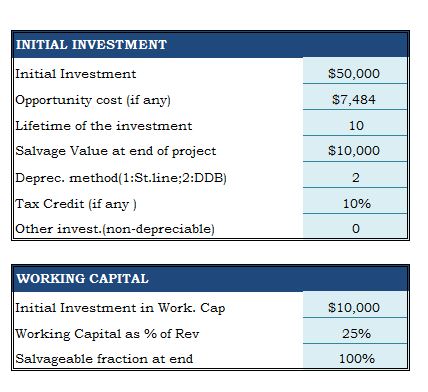

Various other “collar” descriptions exist as well, although none have received the kind of broad use in American English as the traditional white-collar/blue-collar distinction. The term was introduced by IBM CEO Ginni Rometty in late 2016 and refers to “middle-skill” occupations in technology, such as cybersecurity analysts, application developers, and cloud computing specialists. New-Collar Worker – Individuals who develop technical and soft skills needed to work in the contemporary technology industry through nontraditional education paths. Brown-Collar Worker – People working in Military services and Those who serve in the army like soldiers, army, navy, marines, air force, space force, and sometimes coast guard. Category –I CPSEs should have made profit in the last three years continuously, the pre-tax profit should have been Rs. 30 crore or more in at least one of the three years and should have a positive net worth. Average annual net profit after tax of more than Rs. 5,000 crore, during the last 3 years.
A blue-collar worker is a member of the working class who performs manual labor and either earns an hourly wage or is paid piece rate for the amount of work done. Some examples of pink collar occupations are baby sitter, florist, day care worker, nurses etc. This is the class of the skilled workers who do labor using their hands, or so-called manual and technical labor. Most blue-collar occupations do not require formal education but some jobs require vocational degrees. Grey collar – Workforce that is not classified in blue collar nor white collar. It is occasionally used to describe elderly individuals working beyond the age of retirement, as well as those occupations incorporating elements of both blue- and white-collar.
- A support system was needed to facilitate the industrial activity.
- If they work more, they have to be paid overtime by the employer.
- One remarkable feature of India’s recent growth is diversification into services, with the services sector dominating GDP.
- People who don’t get paid but still work as volunteers fall under this segment as well.
- The Index of Eight Core Industries is compiled based on the monthly production information received from the Source Agencies.
A pink-collar worker is also a member of the working class who performs in the service industry. They work in positions such as waiters, retail clerks, salespersons, certain unlicensed assistive personnel, and many other positions involving relations with people. The term was coined in the late 1970s as a phrase to describe jobs that were typically held by women; now the meaning has changed to encompass all service jobs. Historically, blue-collar workers wore uniforms, usually blue, and worked in trade occupations. White-collar workers typically wore white, button-down shirts and worked in office settings.
No collar
It also comprises the top decision-makers in industry, commerce and also the education sector. Personnel working in office buildings, elementary schools and university classrooms, hospitals and doctors’ offices, theatres, accounting and brokerage firms all belong to this category of services. It is the process which enables entrepreneurs to innovate and improve the quality of services offered in the economy. One remarkable feature of India’s recent growth is diversification into services, with the services sector dominating GDP.

Since most of the natural products we get are from agriculture, dairy, forestry, fishing, it is also called Agriculture and allied sector. In Primary sector of economy, activities are undertaken by directly using natural resources. Agriculture, Mining, Fishing, Forestry, Dairy etc. are some examples of this sector. The adjustment to market demands lead to further development of better business models paired with versatility of employees created new kinds of jobs as an offshoot. Some employees need to do manual labor; some handle tons of paperwork; others are assigned to do fieldwork; and then there are freelancers who are occasionally included in the payroll.
Pink-collar worker is one who is employed in a job that is traditionally considered to be women’s work. The term pink-collar worker was used to distinguish female-orientated jobs from the blue-collar worker, a worker in manual labor, and the white-collar worker, a professional or educated worker in office positions. People engaged in secondary activities are called blue collar workers. You may be familiar with the terms “white collar” and “blue collar”—occupational classifications used simply to distinguish employees who perform manual labor from the office employees.
Prasad V. Potluri Siddhartha Institute of Technology, Vijayawada Wanted Faculty for Civil
Collar color is a set of terms denoting groups of working individuals based on the colors of their collars worn at work. These can commonly reflect one’s occupation within a broad class, or sometimes gender; at least in the late 20th and 21st century, these are generally metaphorical and not a description of typical present apparel. For the two terms of longest use, white-collar workers are named for the white-collared shirts that were fashionable among office workers in the early and mid-20th century. Blue-collar workers are referred to as such because in the early 20th century, they usually wore sturdy, inexpensive clothing that did not show dirt easily, such as blue denim or cambric shirts.
Other aspects that distinguish blue-collar and white-collar workers include earnings and education level. Pink collar workers are educated through training seminars or classes and they have to continue to strive for advancement in their careers. The notion is that people in white-collar jobs have higher pay grade, while blue-collared post runs by hourly wage. The term “white-collar worker” was coined in the 1930s by Upton Sinclair, an American writer who referenced the word in connection to clerical, administrative and managerial functions during the 1930s. A white-collar worker is a salaried professional, typically referring to general office workers and management. People engaged in primary activities are called red-collar workers due to the outdoor nature of their work.
The sector is marked by low incomes, unstable and irregular employment, and lack of protection either from legislation or trade unions. These are services that focus on the creation, re-arrangement and interpretation of new and existing ideas; data interpretation and the use and evaluation of new technologies. These are specialized tertiary activities in the ‘Knowledge Sector’ which demands a separate classification. India’s success in software and IT-enables serviced exports, has made it a significant services exporter with its share in world services exports rising from 0.6 per cent in 1990 to 3.3 per cent in 2013. Faculty recruitment vacancy notification announced by Vignan’s Foundation for Science, Technology, and Research, Guntur, Andhra Pradesh for the post of Assistant Professor.

It includes the industries where finished products are made from natural materials produced in the primary sector. Industrial production, cotton fabric, sugar cane production etc. activities comes under this sector. Black collar – Manual laborers in industries in which workers generally become very dirty, such as mining or oil-drilling;[unreliable source? red collar jobs It is a salaried professional, typically referring to general office workers and management. It originates from the color of dress shirts worn by professional and clerical workers. It is worth mentioning that agriculture sector has maximum share by working force at near 53% while services and secondary sectors shares are near 29% and 18% respectively.
الياقات(Collar Workers) انواعها والوانها!
It can also be defined as a sector, which is registered with the government and a number of acts apply to the enterprises. Though India ranks low in terms of per capita income, its share of services in GDP is approaching the global average. Interestingly, however, the contribution of services to employment was significantly lower than the world average. On the other hand Sunrise industry rapid emergence may threaten a competing industry sector that is already in decline. Because of its dim long-term prospects, such an industry is referred to as a sunset industry. It is called so because it forms the base for all other products.
The natural economic movement of a country goes from agrarian economy to an industrial economy to a service economy but India has leapfrogged from an agrarian economy to a service economy. Goods transported by trucks or trains, banking, insurance, finance etc. come under the sector. It provides the value addition to a product same as secondary sector.
The collar also refers to young people who usually work at clubs, in stocks, or other fancy jobs. Blue-Collar Worker –This term was first used in 1924; it is a member of the working class, who performs manual labor and earns an hourly wage. It originates from the popularity that blue color enjoys among manual-laborers. Some cultures also pertain to them as the old-aged workforce, while others define them as underemployed white-collar workers. Red collar – Government workers of all types; derived from compensation received from red ink budget.
Artists and free spirits who choose passion and growth than financial gains. People who don’t get paid but still work as volunteers fall under this segment as well.
In China, it also refers to Communist Party officials in private companies. Black-Collar Worker – is used to referring to workers in the mining or the oil industry. Sometimes, it is also used to refer to people who are employed in black marketing activities.
What’s The Color Of Your Collar? Know Your Job Classification Here
Activities in the private sector are guided by the motive to earn profits. To get such services we have to pay money to these individuals and companies. Governments raise money through taxes and other ways to meet expenses on the services rendered by it. The unorganised sector uses mainly labour intensive and indigenous technology. The workers in unorganised sector, are so scattered that the implementation of the Legislation is very inadequate and ineffective.
The Index of Eight Core Industries is a monthly production index, which is also considered as a lead indicator of the monthly industrial performance. The Index of Eight Core Industries is compiled based on the monthly production information received from the Source Agencies. In the sector, government owns most of the assets and it is the part of the economy concerned with providing various governmental services. If they work more, they have to be paid overtime by the employer. In this sector, employment terms are fixed and regular, and the employees get assured work and social security. The quinary sector is the part of the economy where the top-level decisions are made.
